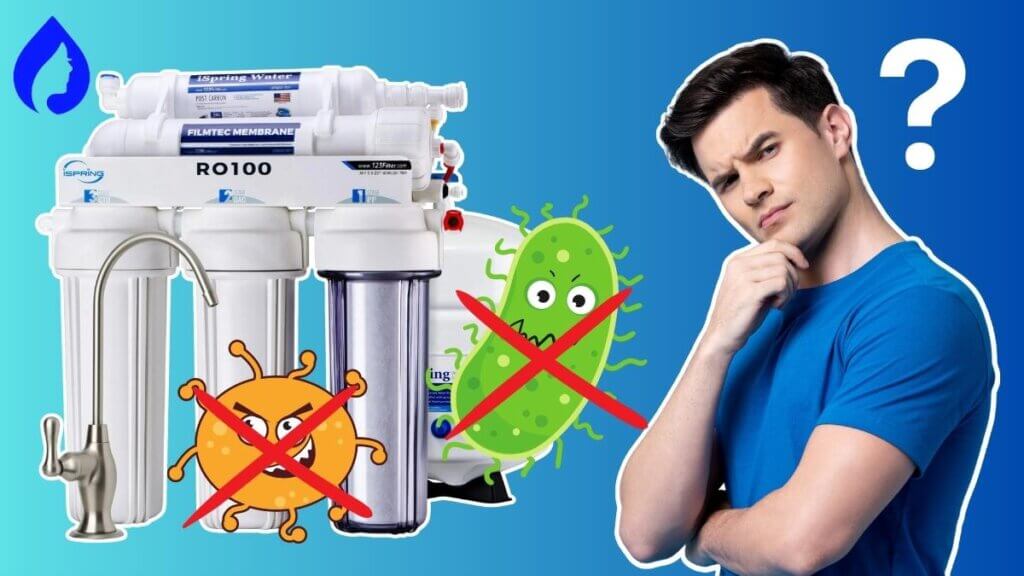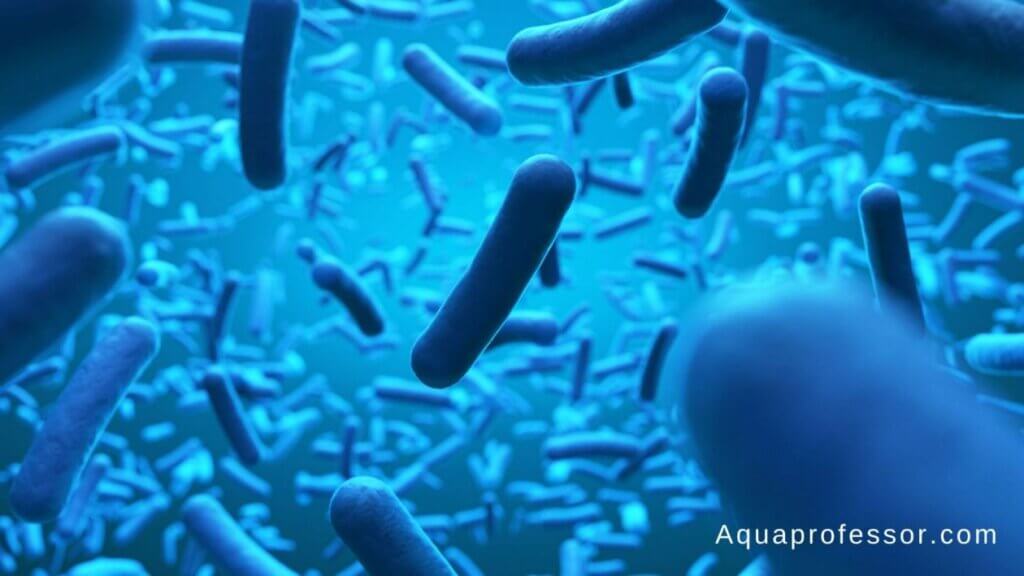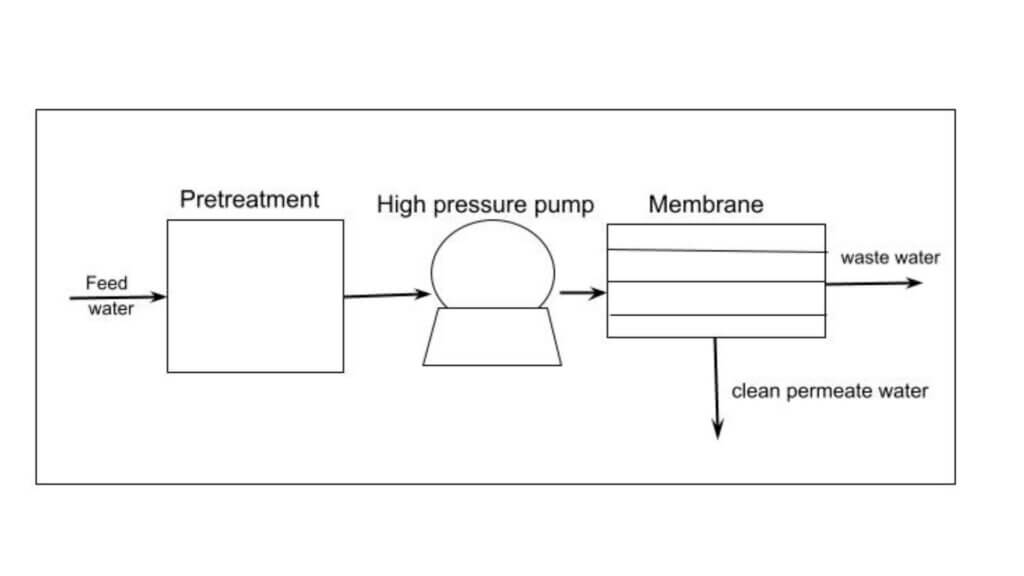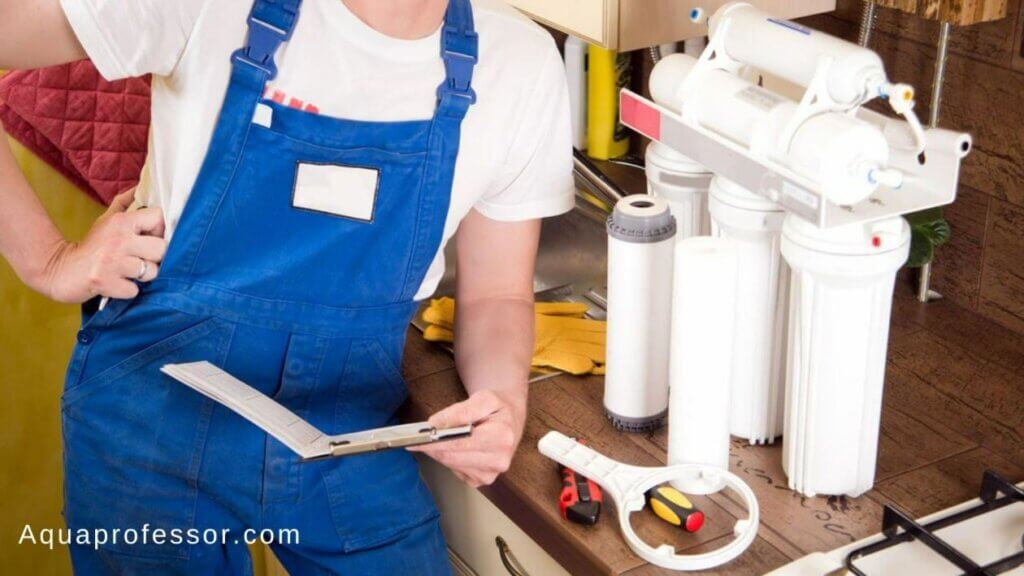
Bacteria in drinking water can be dangerous, but does reverse osmosis remove bacteria?
The Center for Disease Control and Prevention (CDC) has declared that a reverse osmosis system can effectively remove almost all types of bacteria and viruses like E. coli and norovirus from your home water supply, making it fit for drinking.
A recent 2020 study has confirmed the same, declaring that the RO treatment process can significantly reduce bacterial growth potential (BGP) to extremely low levels.
But there’s a catch: Some bacteria or viruses can bypass the tight RO membrane. Learn more about it and the shortcomings of reverse osmosis technology systems in this latest guide.
🦠Does RO Remove Bacteria?

A Reverse Osmosis drinking water system can remove 99% of bacteria and viruses from water samples through its semi-permeable membrane.
In fact, the 2020 study has proved that an RO system is more efficient than activated carbon filtration and UV disinfection in removing bacteria from water. This is because it works at a molecular level and can kill bacteria and viruses from the root.
Here’s how a reverse osmosis system works:

However, despite its tight RO membrane, some bacteria can bypass it. That’s why carbon or calcite post-filters are used in modern RO systems (like Waterdrop G3 and Frizzlife under-sink) to stop bacterial growth in RO water filters.
In extreme circumstances, you can also add a UV light after the point of reverse osmosis filtration to kill the remaining microbes.
Also Read: Is Showering In E Coli Water Safe?
💦What Does Reverse Osmosis Not Remove From Water?

Though reverse osmosis process can remove various contaminants, including bacteria, viruses, and other pathogens actively from impure water, there are still some contaminants that RO can’t remove. Such contaminants include:
Also, no one technology (like the Reverse Osmosis system) can indeed remove all contaminants at the same time. That’s why modern water filtration systems use activated carbon and sediment filters in addition to a Reverse Osmosis system to provide safe and pure water through sufficient water treatment.
Note:
A water softener is better for hard water stains, and a calcite filter is apt for acidic water (green) stains.
Also Read: 6 Coliform Bacteria In Well Water Symptoms
💡Does Reverse Osmosis Remove Bacteria: FAQs
Can bacteria live in RO water?
The reverse osmosis filter of an RO system is designed to effectively kill about 99 percent of bacteria and viruses in tap water. It has the most excellent filtration accuracy among all water filters. The pores of the RO filter are so tiny (0.0001 microns) that rarely any bacteria or virus can pass through them.
However, there is still a 1 percent chance that the water passing through the reverse osmosis filter of your RO system may comprise certain bacteria or viruses (those whose sizes are smaller than 0.0001 microns).
For removing bacteria or viruses from water, install modern RO systems that use carbon or calcite post-filters to avoid bacterial growth in the Reverse Osmosis water filter.
How does reverse osmosis work to remove bacteria?
An RO system is a high-grade filtration system whose reverse osmosis filter can eliminate about 99% of bacteria and viruses from your drinking water. With high effectiveness, the reverse osmosis filtration system transmits the feed water to its RO filter (a semi-permeable membrane) after making it highly pressurized.
The semi-permeable membrane possesses many pores whose sizes are slightly greater than 0.0001 microns. So, any bacteria or virus bigger than the pore size of the RO filter gets blocked on the membrane surface.
So the harmful microbes are thrown out, and clean drinking water is dispensed for us to drink.
How do you remove bacteria from tap water?
You can remove bacteria from your tap water through any of the following methods:
1. Disinfection
2. Installing distillation systems
3. Boiling
4. Chemical disinfection + filtration (in case boiling your tap water several times is impossible or tiresome)
5. High-grade Filtration method (the best choice is installing a Reverse Osmosis filtration system)
6. UV light exposure
7. MIOX system (generating chlorine-based mixed oxidants from a salt solution)
Does reverse osmosis remove E Coli?
Yes, reverse osmosis effectively removes 99% of E coli from drinking water.
What does reverse osmosis remove from water?
Reverse osmosis, being a highly effective process of disinfecting water, eliminates all the following common contaminants from your home water and makes it fit for drinking:
1. Chemical contaminants, including heavy metals, metal ions, and aqueous salts (for example, lead, copper, sodium, arsenic, phosphorus, calcium, etc.)
2. Physical contaminants (like sediment)
3. Chlorine (to a certain extent)
4. Several pathogens and microbes, including bacteria, viruses, and protozoans.
5. Various minerals (so you need to remineralize them)
What are the disadvantages of RO?
Though the Reverse Osmosis system is the safest filtration system that filters water with very high effectiveness and comprises many benefits, it also has the following disadvantages:
1. The high installation cost of the RO filter
2. Decrease in pH of the water
3. The removal of healthy minerals from water by the reverse osmosis filter
4. Costly maintenance
5. Water waste
Adarsh is a Health & Nutrition Sciences graduate with expertise in environmental health. He is associated with ventures like Glacier Fresh Filter and Simpure Filter Systems. Through Aqua Professor, he intends to provide helpful information to every home to help them make smarter decisions.
